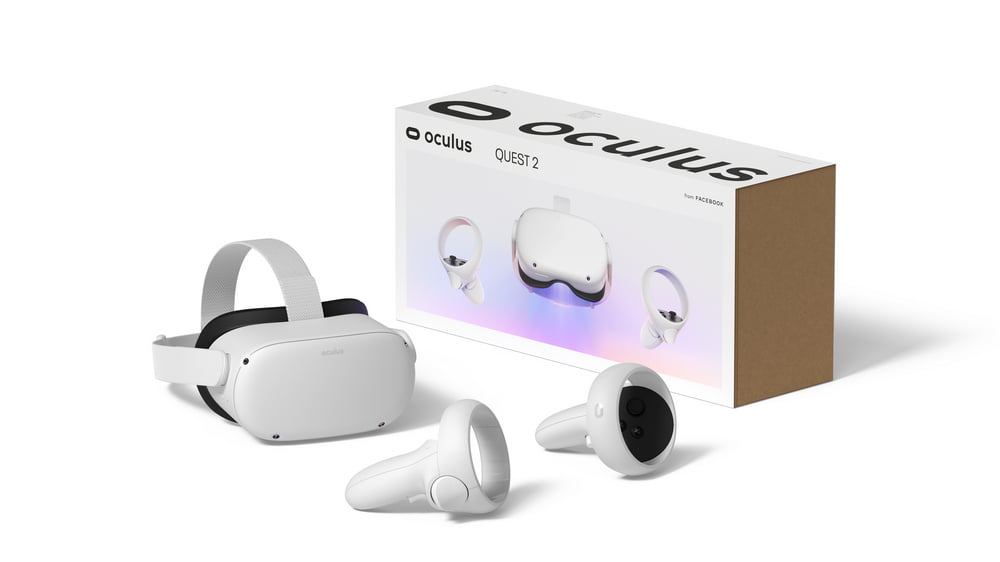Meta Quest 2 becomes more expensive - What's behind it?

Meta Quest 2 will cost $100 more starting in August. What's behind Meta's move?
One thing can be said for sure: The price increase surprised everyone.
Electronics usually get cheaper the older they get. With Meta Quest 2, it's the other way around. Soon two years after the release of the VR headset, the base model with 128 gigabytes of storage space is almost 30 percent more expensive, without changing anything in terms of technical features.
Those who purchase the headset for $400 instead of $300 beginning in August will get the same hardware. The same applies to the more expensive model with 256 gigabytes of storage space, which will now cost $500 instead of $400.
Content
Sustainability and inflation
One of the reasons Meta gives for the price increase is sustainability. Meta has invested billions in research and development as well as software and wants to continue doing so. According to Meta, the price increase should help secure long-term investments, especially since Meta does not make a profit from sales of the VR headset.
A price increase could change this. As a second reason, Meta mentions increasing manufacturing costs for the hardware, which are due to economic factors like inflation.
The company rightly points out that Meta Quest 2 has increased in value on the software side since launch. Since October 2020, it added many new features such as the Oculus Move fitness tracker, Air Link PC VR streaming (guide), and mixed reality support for VR apps.
They expanded the usage scenarios of the device and made the VR headset more versatile than it was at launch. In August 2021, Meta also doubled the storage of the base model from 64 to 128 gigabytes - at no extra charge.
Quest 2 dominates the market and is still unrivaled
The total package of hardware and software is still unrivaled even for $400 or $500, at least at this point. That could change with the Pico Neo 3 Link (review), a potential competitor from the meta opponent Bytedance. According to concrete indications, the new VR headset could soon hit the market and offer newer technology than Meta Quest 2 at a similar price, but that remains to be seen.
Pico will not have it easy, as Meta Quest 2 dominates the market. Meta made sure of this by aggressively pricing the VR headset. Now that Meta controls the market, the price can rise again, which could be Meta's calculation.
On the one hand, the price increase can be interpreted as a concession to the distortions of the global market and Meta's own problems. It can also serve to appease investors who have historically challenged Meta's VR strategy. The timing of the announcement is not coincidental. Meta will disclose its latest quarterly results today, and the numbers are not likely to be rosy.
On the other hand, the price increase may also be a sign of Meta's confidence. A product that sells poorly and fears competition usually doesn't see a price increase.
Preparing for Meta Quest 3?
VR journalist David Heaney has an interesting theory about the price increase. He thinks Meta raised the price less in terms of economic factors than the manufacturing costs of Meta Quest 3.
The new VR headset will reportedly launch in late 2023 and could introduce technologies like face and eye tracking to the lineup. By increasing the price of the Quest 2, Meta could cushion the additional costs and make the product line more financially sustainable. End users would now have time to get used to the new entry-level price for Meta's VR headsets.
Also playing a role could be Meta's accounts rolling out in August, which drop the Facebook account requirement. Here, one could speculate that Meta will pass on the losses incurred by dropping user data to end users in the form of a higher device price. However, the weight of this argument is difficult to judge from the outside.
The price increase is good for the VR industry
Even if Meta sells fewer devices in the future, and that is to be expected due to the higher price, this development is positive for the VR industry. Such a low entry price is unsustainable for a technology that is in its infancy and still has its biggest development leaps ahead of it.
With the price dumping of the last two years, Meta promoted unrealistic price expectations and excluded competitors from the market. Virtual reality is getting more expensive again, but that benefits competition and should lead to a healthier ecosystem overall.
Virtual reality has a long way to go technologically. The cost of research, development, and manufacturing cannot be borne by manufacturers alone. In the end, consumers will and must decide with their wallets how quickly the technology develops.
Note: Links to online stores in articles can be so-called affiliate links. If you buy through this link, MIXED receives a commission from the provider. For you the price does not change.